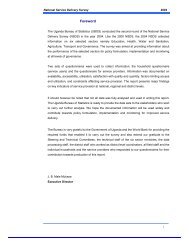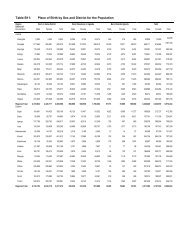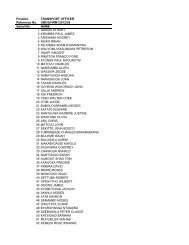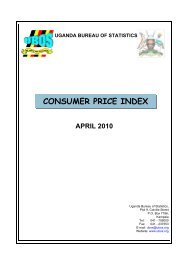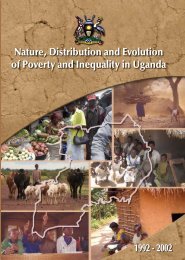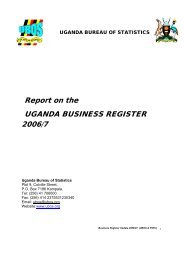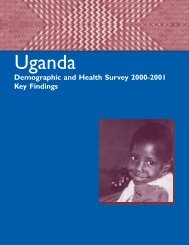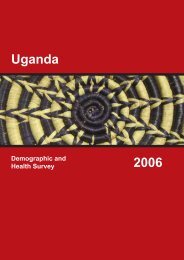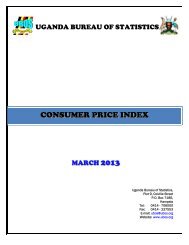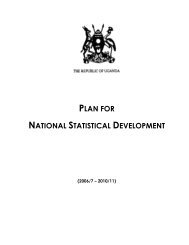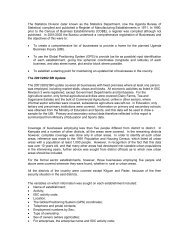Census Analytical Report - Uganda Bureau of Statistics
Census Analytical Report - Uganda Bureau of Statistics
Census Analytical Report - Uganda Bureau of Statistics
Create successful ePaper yourself
Turn your PDF publications into a flip-book with our unique Google optimized e-Paper software.
<strong>Analytical</strong> <strong>Report</strong>CHAPTER 8: HOUSEHOLD AND HOUSING CHARACTERISTICSHousing is one <strong>of</strong> the basic human needs that have a pr<strong>of</strong>ound impact on the health,welfare, social attitudes and economic productivity <strong>of</strong> the individual. It is also one <strong>of</strong>the best indications <strong>of</strong> a person's standard <strong>of</strong> living and <strong>of</strong> his or her place in society.The 2002 <strong>Census</strong> collected data on various aspects <strong>of</strong> households including thehousing units they stay in and access to selected social services such as healthcentres or primary schools. This information is used to derive the welfare <strong>of</strong> thehouseholds. Such information was not collected for persons not enumerated inhouseholds e.g. those enumerated in hotels or in institutions and therefore they arenot included in this analysis.This chapter provides information on the housing conditions <strong>of</strong> the population,household sanitation, assets and amenities available to the household and generalhousehold welfare. The results on household welfare have been analyzed to reflectthe characteristics <strong>of</strong> the households according to regional and district distribution,rural and urban residence and sex <strong>of</strong> heads <strong>of</strong> households,8.1 Housing ConditionsPermanent dwelling units are those built with construction materials (for ro<strong>of</strong>, floor andwall) that can maintain their stability for more than fifteen years. The temporarydwelling units are those that are built with materials that cannot maintain their stabilityfor more than 3 years and the semi permanent are those that are built with acombination <strong>of</strong> permanent and temporary materials.18 percent <strong>of</strong> thehouseholds werestaying inpermanentdwellingsThe majority <strong>of</strong> the households lived in temporary or semi-permanent housing units.Only 18 percent <strong>of</strong> the households lived in dwelling units built with permanentmaterialsTable 8.1: Distribution <strong>of</strong> Households by Status <strong>of</strong> the Dwelling UnitSex <strong>of</strong> headResidenceStatus <strong>of</strong> Dwelling Unit Male Female Urban Rural TotalTemporary 71.9 68.6 26.0 78.5 71.1Semi-permanent 11.3 11.6 14.3 10.9 11.4Permanent 16.8 19.8 59.7 10.6 17.5Total 100 100 100 100 10083



